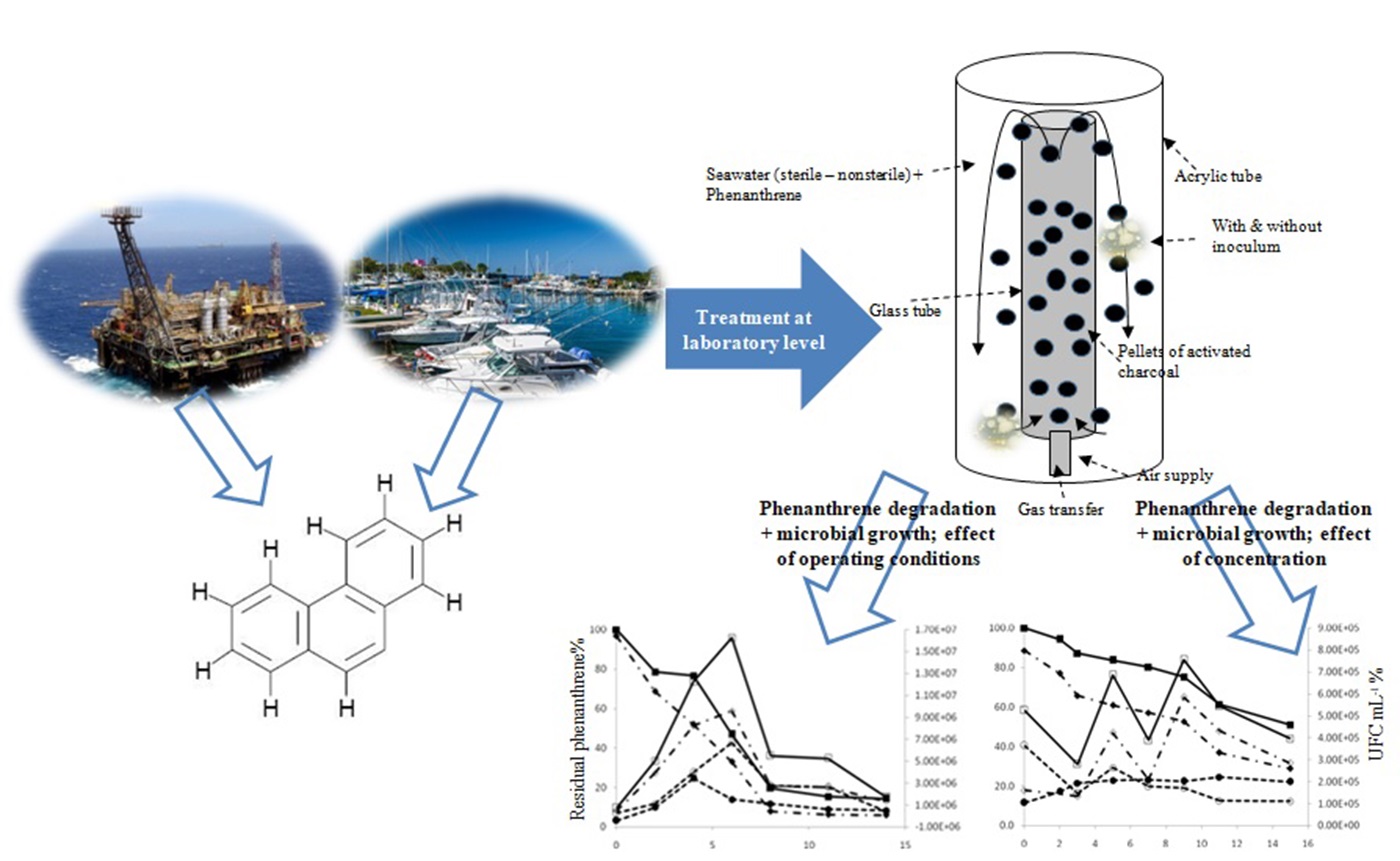 |
|
The phenanthrene degradation and microbial growth at short times (t ≤ 16 days) using a fluidized bed reactor (FBR) with activated charcoal (AC) as support for the bacterial consortium in different seawater types (sterile and non-sterile) and inoculum additions were studied. The effect of the reactor operating conditions (water type, addition of inoculum, phenanthrene concentration of 112 mg L-1, and air flow of 1.5 L min-1) and variations in phenanthrene concentration (60, 200, and 600 mg L-1 at an air flow of 2 L min-1) were evaluated. Phenanthrene degradation was improved when an inoculum was added to the seawater (62.5%–69.5% of the initial concentration was degraded); the best microbial growth was observed when an inoculum was added to sterile seawater (constant concentration) and when phenanthrene concentration was 200 mg L-1; however, the highest degradation rate values (mg CFU-1) were obtained for a phenanthrene concentration of 600 mg L-1. Operating conditions and phenanthrene concentration had significant impacts on phenanthrene degradation and microbial growth (P ≤ 0.05). The findings show that the FBR efficiency in phenanthrene degradation responds to a multi factorial operating conditions; however, high efficiencies can be reached if the operating conditions, including inoculum addition, are carefully controlled.
Keywords: Phenanthrene degradation, microbial growth, fluidized bed reactor, inoculum, operating conditions.
|
|
 |

